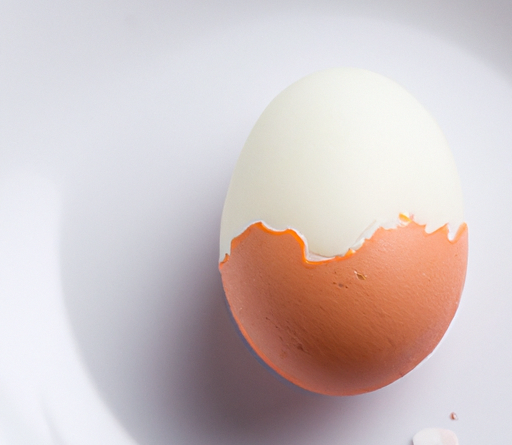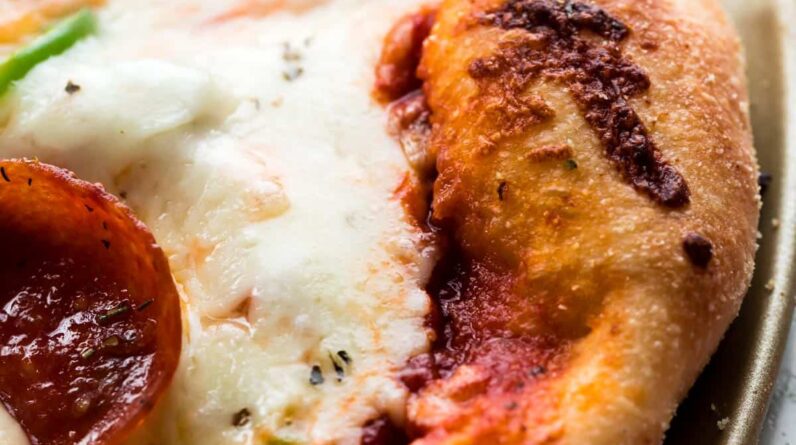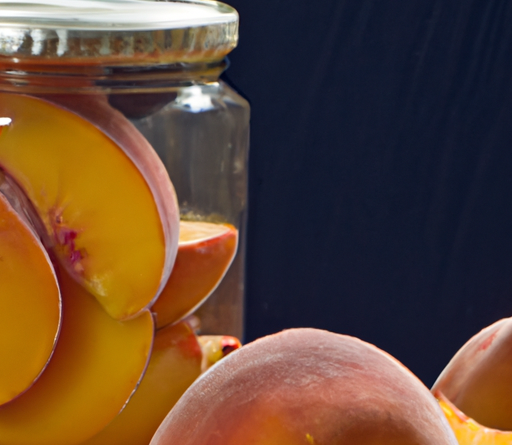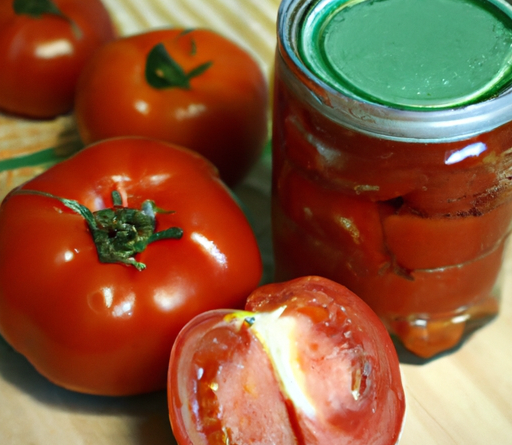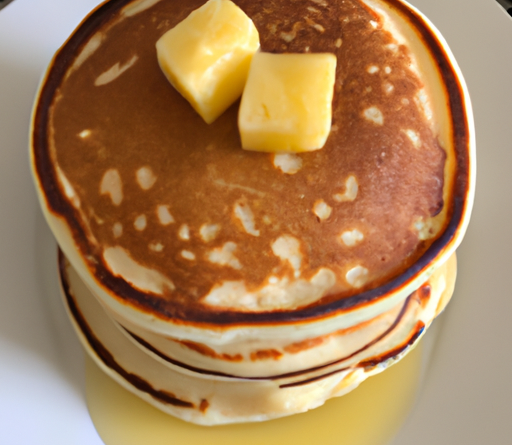
Are you a fan of fluffy, delicious pancakes? Do you wish you could make them from scratch in the comfort of your own kitchen? Well, you’re in luck! In this article, we’re going to walk you through the process of making perfect pancakes. Don’t worry if you’re a beginner, we’ll provide you with all the tips and tricks you need to ensure your pancakes turn out absolutely delicious. So, let’s get started and create a stack of mouthwatering pancakes together!
First things first, it’s important to gather all your ingredients before you begin. You’ll need some all-purpose flour, baking powder, salt, sugar, milk, an egg, and melted butter. Now that you have all the ingredients ready, the next step is to combine them and mix until you have a smooth batter. Be careful not to overmix, as this can result in tough pancakes.
Once your batter is ready, preheat a non-stick skillet or griddle over medium heat. It’s essential to cook your pancakes on a properly heated surface to achieve that perfect golden brown color. To test if your skillet is ready, you can drop a few drops of water on it. If the water sizzles and evaporates almost immediately, your skillet is hot enough.
Now that you’re aware of the basic steps, you’re ready to dive deeper into the world of pancake-making. In the next section, we’ll explain the importance of measurements and share some delightful pancake variations for you to try. So, stay tuned and get ready to impress everyone at the breakfast table with your fabulous pancake-making skills!
Table of Contents
How to Make Perfect Pancakes
Pancakes are a classic breakfast dish that can be enjoyed by people of all ages. Whether you prefer them light and fluffy or thin and crispy, making the perfect pancake is an art that can be mastered with the right ingredients, preparation techniques, and cooking methods. In this article, we will guide you through the process of creating delicious homemade pancakes that will impress your friends and family.
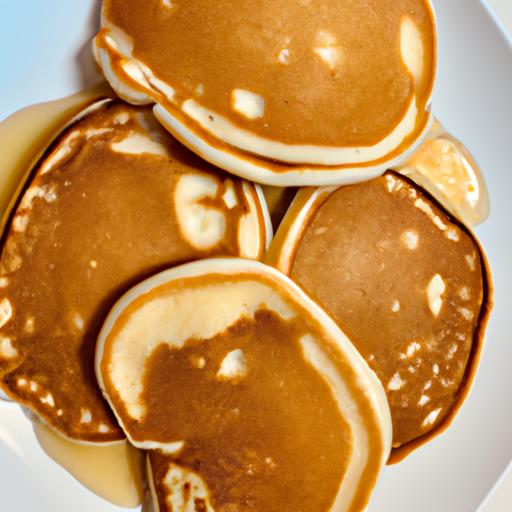
Choosing the Right Ingredients
Selecting the Perfect Flour
The key to a good pancake lies in choosing the right flour. All-purpose flour is commonly used in pancake recipes as it provides a balanced texture and flavor. However, if you prefer a lighter and more delicate pancake, you can opt for cake flour. Whole wheat flour can also be used to add a nutty flavor and increase the nutritional value of your pancakes.
Choosing the Right Leavening Agent
To achieve that fluffy texture, pancakes require a leavening agent. Baking powder is the most commonly used agent as it helps to create air bubbles in the batter, resulting in a light and airy pancake. However, if you prefer a denser pancake, you can use baking soda instead. Just be sure to use it in combination with an acidic ingredient like buttermilk or yogurt to activate its leavening properties.
Deciding on the Sweetener and Flavorings
While pancakes are delicious on their own, adding a touch of sweetness and flavor can take them to the next level. Granulated sugar is commonly used as a sweetener in pancake recipes, but you can also experiment with alternatives like honey, maple syrup, or even brown sugar for a richer flavor profile. Furthermore, adding vanilla extract, cinnamon, or nutmeg can enhance the taste and aroma of your pancakes.
Preparing the Pancake Batter
Measurement and Mixing of Dry Ingredients
Achieving the perfect balance of dry ingredients is crucial for a successful pancake batter. In a mixing bowl, combine the flour, baking powder, sugar, and any additional flavorings. It is essential to measure the ingredients accurately to ensure consistency in each pancake. Whisk the dry ingredients together to evenly distribute them and break up any lumps.
Incorporating Liquid Ingredients
In a separate bowl, whisk together the wet ingredients such as milk, eggs, and melted butter. The milk adds moisture and contributes to the tenderness of the pancakes, while eggs provide structure and richness. The melted butter adds flavor and helps to create a golden-brown crust. Slowly pour the wet ingredients into the dry mixture, stirring gently until just combined. Overmixing the batter can result in tough pancakes, so be mindful not to overdo it.
Importance of Proper Mixing Techniques
Proper mixing techniques play a significant role in the final texture of your pancakes. It is crucial to mix the batter until the ingredients are just incorporated. Small lumps in the batter are perfectly normal and will disappear as the pancakes cook. Over-mixing the batter can lead to gluten development, resulting in tough and chewy pancakes. Remember, a few lumps in the batter are better than an overmixed one.
Adding Extra Ingredients
Exploring Fruit and Nut Variations
One of the best things about pancakes is their versatility. You can add various fruits and nuts to your batter to create different flavor combinations. Consider adding blueberries, sliced bananas, diced apples, or chopped nuts like pecans or walnuts to your pancake batter. These ingredients will not only add a burst of flavor but also provide additional texture and nutritional benefits.
Incorporating Chocolate and Caramel
If you have a sweet tooth, why not take your pancakes to a whole new level of indulgence? Adding chocolate chips or drizzling caramel sauce into the batter can transform ordinary pancakes into a decadent treat. The heat from the griddle will melt the chocolate, creating pockets of gooey goodness. For an extra touch of luxury, consider sprinkling some sea salt on top of the caramel for a delightful contrast of flavors.
Experimenting with Savory Ingredients
Pancakes don’t always have to be sweet. For those who prefer a savory twist, adding ingredients like cheese, herbs, or cooked bacon to the batter can create a satisfying and flavorful pancake. These savory pancakes make for a unique and delicious breakfast or brunch option. Serve them with a dollop of sour cream or a drizzle of hot sauce for an extra kick.
Achieving the Right Consistency
Understanding and Adjusting Batter Thickness
The consistency of the pancake batter is crucial in determining the final result. If your batter is too thick, your pancakes will be heavy and dense. On the other hand, if your batter is too thin, the pancakes will spread too much and become difficult to flip. Aim for a batter that pours easily but still maintains a slight thickness. If the batter seems too thick, gradually add small amounts of milk until it reaches the desired consistency.
Importance of Resting Time
Resting the pancake batter before cooking is essential for achieving light and tender pancakes. Resting allows the flour particles to fully absorb the liquid ingredients, resulting in a more consistent texture. It also helps to relax the gluten, making the pancakes more tender. Letting the batter rest for about 10-15 minutes will yield the best results.
Making Fluffy or Thin Pancakes
The amount of leavening agent and the cooking technique play a significant role in determining whether your pancakes turn out fluffy or thin. If you prefer thick and fluffy pancakes, increase the amount of baking powder in the recipe, and avoid pressing the pancakes down with the spatula while cooking. For thin and crispy pancakes, decrease the amount of baking powder and spread the batter thinly on the griddle.
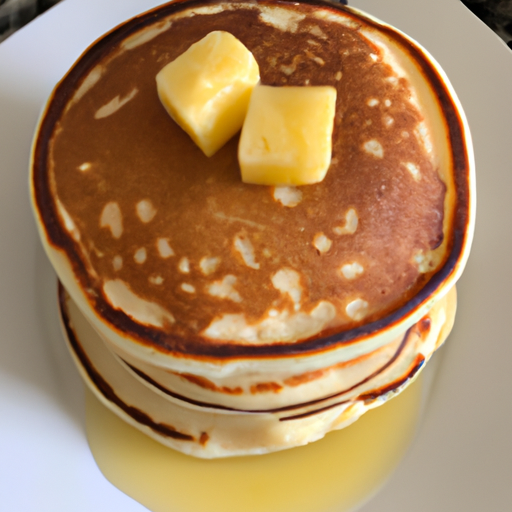
Choosing the Right Cooking Surface
Comparing Different Pan Types
The choice of pan can significantly impact the cooking process and the final result of your pancakes. Non-stick pans are a popular choice as they require less oil or butter, and the pancakes are less likely to stick. Cast iron pans, on the other hand, distribute heat evenly, allowing for a more consistent browning of pancakes. Electric griddles are another option, especially if you’re cooking for a large number of people.
Optimizing Heat Control
Proper heat control is essential for evenly cooked pancakes. Heat your pan or griddle over medium-low heat to prevent burning the pancakes. It’s important to adjust the heat as needed throughout the cooking process. If your pancakes are browning too quickly on the outside but remain undercooked on the inside, lower the heat. Conversely, increasing the heat can help speed up the cooking process if your pancakes are taking too long to brown.
Non-Stick vs. Traditional Pans
The choice between non-stick and traditional pans depends on your personal preference and cooking style. Non-stick pans are convenient as they require less oil and are easier to clean. However, traditional pans, like cast iron, provide superior heat retention and browning. Traditional pans can also develop a seasoned layer over time, enhancing the flavor of your pancakes. Consider your cooking needs and preferences when choosing the right pan for your pancakes.
Perfecting the Cooking Technique
Preheating the Pan
Before pouring the pancake batter, make sure the pan or griddle is properly preheated. You can test the heat by sprinkling a few drops of water on the surface. If the water sizzles and evaporates immediately, the pan is ready. Preheating ensures that the pancakes start cooking evenly from the moment they hit the hot surface, resulting in a nicely browned exterior.
Using the Right Amount of Batter
The key to achieving perfectly sized pancakes lies in using the right amount of batter. Too much batter will result in oversized pancakes that are difficult to cook through, while too little batter will produce flat and underwhelming pancakes. Use a measuring cup or ladle to pour the batter onto the pan. A 1/4 cup measuring cup is a good starting point for most pancakes, but you can adjust the amount based on your preference.
Flipping and Cooking Times
Knowing when to flip your pancakes is essential to achieve a golden brown color and a light, fluffy interior. Cook the pancakes on the first side until bubbles begin to form on the surface and the edges start to look set. This usually takes about 2-3 minutes. Gently flip the pancakes using a spatula and cook for an additional 1-2 minutes on the other side. Keep an eye on them to prevent overcooking.
Serving and Presenting Pancakes
Plating and Arranging Pancakes
Now that your pancakes are perfectly cooked, it’s time to serve them in an appealing and appetizing way. Stack the pancakes on a warm plate, placing each one on top of the other. The stack can be as small or as tall as you prefer. To keep the pancakes warm while you finish cooking the remaining batter, cover the stack with a clean kitchen towel or aluminum foil.
Adding Toppings, Syrups, and Sauces
The toppings and syrups you choose can significantly enhance the flavor of your pancakes. Classic pancake toppings include butter and maple syrup, which add a rich and indulgent sweetness. You can also experiment with different fruit compotes, flavored syrups, or even homemade whipped cream. If you prefer a healthier option, try topping your pancakes with fresh fruit, yogurt, or a drizzle of honey.
Garnishing Options for Visual Appeal
To make your pancakes even more visually appealing, consider adding some garnishes. Dusting your pancakes with powdered sugar creates an elegant and professional touch. Fresh fruit slices, mint leaves, or a sprinkle of cinnamon can also add a pop of color and elevate the presentation. Get creative and make your pancakes look as good as they taste.
Common Mistakes to Avoid
Overmixing the Batter
As mentioned earlier, overmixing the pancake batter can lead to tough and chewy pancakes. Stir the batter just until the ingredients are incorporated. Small lumps are normal and will disappear when cooked. Resist the urge to keep stirring until the batter is completely smooth.
Incorrect Temperature Control
Maintaining the right cooking temperature is crucial for evenly cooked pancakes. Avoid cooking over high heat as it can result in burned pancakes on the outside while remaining undercooked on the inside. Adjust the heat as needed throughout the cooking process to achieve the perfect balance.
Neglecting Resting Time
Resting the pancake batter allows the ingredients to fully combine and the flour to hydrate. It also relaxes the gluten, resulting in tender pancakes. Dedicate the recommended resting time to achieve the best possible texture in your pancakes.
Troubleshooting Pancake Issues
Dealing with Undercooked Pancakes
If your pancakes are consistently turning out undercooked in the center, the heat may be too high, causing the pancake to cook too quickly on the outside. Reduce the heat to allow for more even cooking. You can also try spreading the batter thinner to speed up the cooking process.
Fixing Burnt or Unevenly Cooked Pancakes
A burnt pancake can be salvaged by simply trimming off the burnt edges with a knife. To avoid unevenly cooked pancakes, make sure your heat is evenly distributed and adjust the heat as necessary throughout the cooking process.
Preventing Pancakes from Sticking
To prevent your pancakes from sticking to the pan, make sure you’re using a well-seasoned and properly preheated non-stick pan. If you’re using a traditional pan, lightly grease it with oil or melted butter. Additionally, wait until the pancakes are fully cooked on one side before attempting to flip them to avoid tearing.
Conclusion
Making perfect pancakes is an art that requires the right ingredients, proper preparation techniques, and good cooking skills. With the guidance provided in this article, you now have the knowledge to create delicious homemade pancakes that will impress everyone at the breakfast table. Don’t be afraid to experiment with different flavors, toppings, and cooking techniques to make each pancake experience unique and enjoyable. So, get your apron on, fire up the stove, and start flipping those pancakes to embark on a culinary adventure that will delight your taste buds and make breakfast time a special occasion.


